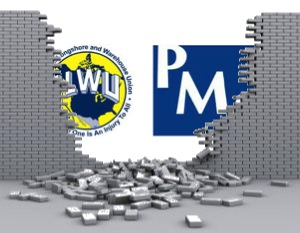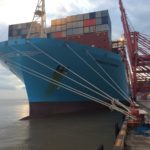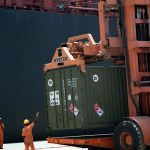ILWU & PMA Likely Heading for Fight that Will Cost Shippers
Their supply chains shaking and rattling, shippers wake up in cold sweats. If not dark, the horizon is hazy, impossible to see what lies ahead. But shippers know there’s a contract expiration out there. And they dread it. Shippers can’t help but hear a little voice in their heads, “Theeey’re heeere.” What’s here? The poltergeists of the 2014-15 contract negotiations between the International Longshore & Warehouse Union (ILWU) and the Pacific Maritime Association (PMA). As bad as that ghost is, as damaging as those 2014-15 negotiations were to shippers’ businesses, shippers wonder, Will the next negotiations be worse?
Here We Go Again
We have entered into the final year of the current ILWU/PMA master contract, which will expire July 1st, 2022. Shippers often lobby, even beg, for these contract negotiations to start early, well before the current contract expires. However, the union tends to prefer holding off on earnest negotiations until the previous contract expires, so they can use the most powerful weapons in their arsenal for negotiation leverage: slowdowns, threats of strikes, and strikes.

The ones who suffer the most for the use of these weapons, and lockouts from employers, are shippers. When the 2014-15 negotiations turned contentious, congestion gripped the West Coast ports. Retailers didn’t get goods in time to stock the shelves for the holiday shopping season, agricultural exporters could do nothing but watch as their produce rotted on the docks, international contracts were forever lost, and the economy suffered billions of dollars in losses.
Of course, we’re here in the middle of peak season, so why are we talking about a contract expiration that doesn’t take place until next peak season? The answer is because contentious contract negotiations can be so disruptive – and downright destructive – that shippers are smart planning ahead for how to deal with them. Many shippers are already doing so, worried even more about the transition from the current ILWU contract to the next than such transitions in years past, according to a Journal of Commerce (JOC) article by Peter Tirschwell:
The approaching expiration next July of the current US West Coast dockworker contract is prompting more than the usual amount of interest among shippers. This is due to the possibility that any disruption tied to the negotiations for a new contract could extend the paralysis that has consumed container shipping since last year. Several importers have already put contingency plans in place in the event of labor disruption on the West Coast docks, and some tell JOC.com they have already begun diverting cargo to East Coast ports.
It’s scary to think that after the last year of port congestion, record high freight rates, and supply chain disruption, we could be on our way to yet another disruptive, port congesting, cargo delaying event that can also stretch on for months and months. There are those who worry we’ll get little respite between the port congestion we’ve been seeing and the port congestion likely to come with the ILWU/PMA contract negotiations. The end result would be two years straight of incredibly difficult shipping conditions for importers and exporters.
Automation an Automatic Fight
The biggest issue that will likely cause these contract negotiations to be contentious is port automation. That should come as no surprise to anyone.
Both longshore unions, the ILWU on the West Coast and the ILA on the East and Gulf Coasts, have long fought against automation at the ports. That fight has caused automation and efficiency at U.S. ports to lag well behind many ports around the world. In fact, in a blog about how the pandemic did not cause the high freight rates we’ve been seeing (it acted more as a tipping point), Universal Cargo CEO Devin Burke was quoted as specifically pointing to the longshoremen unions “keeping ports (especially L.A.) very slow, cumbersome, and congested” as one of seven factors leading to the high freight rates shippers have been suffering through.
Despite the unions fighting against automation, some has come anyway. The progress of technology at the ports is ultimately inevitable because it is needed. The ILWU has been rewarded handsomely for what compromises it has made when it comes to automation. Tirschwell writes:
In recent years, ILWU members have become increasingly vocal in their opposition to terminal automation, seeing it as an existential threat despite having agreed in 2008 and in all subsequent contracts to allow automation at West Coast terminals. By the time the current agreement expires on July 1, 2022, the dockworkers will have received some $800 million in incremental wages and benefits in return for that concession.
The increasing opposition to automation mentioned above makes for a likely problem when it comes to negotiating the next contract. In fact, Tirschwell also writes:
Management sources tell JOC.com they anticipate the union will aggressively seek to roll back terminal operators’ rights to automate and thereby densify limited terminal acreage, especially at the ports of Los Angeles and Long Beach. The TraPac Los Angeles and Long Beach Container Terminal facilities have already been automated, APM Terminals automated a section of its Pier 400 terminal in Los Angeles, and the MSC-owned Total Terminals International (TTI) Long Beach has plans in the works for a 10-year automation project that the ILWU has claimed will result in “the destruction of jobs and maximum extraction of foreign profit.”
If things do get ugly with contract negotiations, shippers need to be ready. It’s not too soon to start planning. In the next blog, we’ll look at how shippers can protect themselves from this threat to their supply chains.




